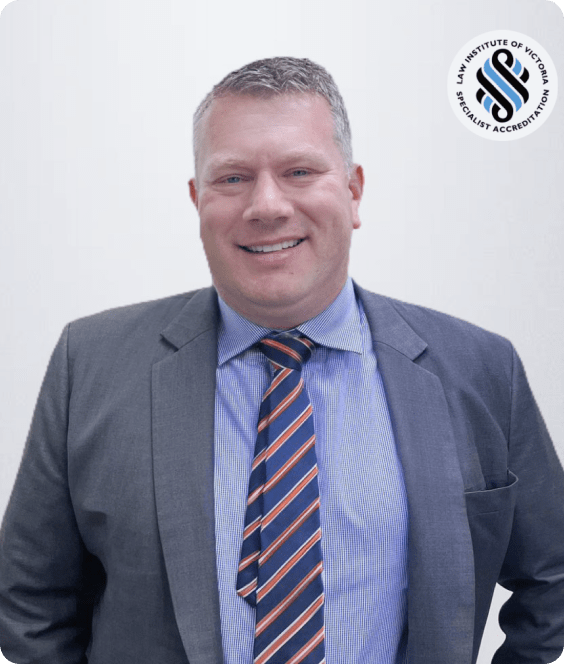Every state and territory across Australia maintains a sex offender registry, a critical tool for law enforcement. These registries keep track of individuals convicted of sexual offences, particularly against minors. For those wondering how to check if someone is on the sex offenders register, it remains a challenge due to the lack of public accessibility.
Wondering if you can hop online and look someone up on the sex offender database? The short answer is no. Access to such sensitive information is tightly controlled and generally not available to the general public. That said, there are a few exceptional cases where law enforcement may disclose details from the registry.
This can happen in situations deemed ‘exceptional’—for instance, when sharing information with certain individuals or organisations such as employers, landlords, or institutions like schools or child care centres, particularly if they are near the registered individual.
For the most part, these disclosures by police are either proactive or in response to specific requests from concerned parties who meet stringent criteria. This ensures a balance between community safety and the privacy rights of registered individuals, aligning with both legal and ethical standards.
Transitioning to the specifics of New South Wales, let’s delve into the nuances of their legal framework regarding sex offenders and the pertinent public safety considerations.
Understanding How to Check if Someone is on the Sex Offenders Register in the NSW Child Protection Registry
Down under New South Wales, the legal framework governing the monitoring of sex offenders is encapsulated in the NSW Child Protection Registry. This system, established by the Child Protection (Offenders Registration) Act 2000, serves as the backbone for ensuring that individuals who have committed sexual offences are tracked appropriately.
So, what exactly does this act cover? Well, it spells out the nitty-gritty of who gets listed on the registry—termed as registrable persons—and delves into how long they remain under this watchful eye. Moreover, it’s not just about keeping a list; there are specific rights and duties assigned to those registered and the entities that might access this sensitive info.
Think of it this way: the registry is a bit like a library of sorts—only that instead of books, it houses crucial data on individuals whose past actions necessitate close oversight. The goal? To keep our community safe while balancing the tricky terrain of privacy and rights for all involved.
As we explore more about who gets to peek into this registry and under what circumstances, remember, the overarching aim is safety, always ensuring the wheels of justice turn smoothly without trampling on privacy. Now, let’s delve deeper into who’s on this list and the rules they must follow in the bustling state of NSW.
Unpacking the Differences: Sex Offenders Register vs. Child Protection Register
Ever wondered if the Sex Offenders Register is the same as the Child Protection Register in New South Wales? or how to check if someone is on the sex offenders register? It’s a common question and the answer is a bit nuanced. Essentially, both registers aim to safeguard the community, but they catalogue different types of offences under distinct categories.
The Child Protection Register is broad, capturing details not only about those convicted of child sexual offences but also a wider array of serious crimes, termed registrable offences. These are split into two main classes:
- Class 1 Offences: These are the heavy hitters including:
- Murder of a child,
- Sexual offences involving a child, even if they occurred outside of Australia,
- Continuous or persistent sexual abuse of a child.
For anyone flagged with a Class 1 offence, the law requires a reporting period of 15 years—a timeline during which they must regularly check in with authorities.
- Class 2 Offences: These are also severe but somewhat less directly linked to sexual misconduct with a child. They include:
- Manslaughter of a child,
- Severe injury to a child,
- Luring or grooming someone under 16 for sexual activities,
- Kidnapping or abduction of minors,
- Involvement in child prostitution whether facilitating, participating, or profiting from it,
- Other sexual offences and indecent acts directed at children, including those committed abroad.
Individuals convicted of Class 2 offences need to report for 8 years.
Now, if someone has been convicted of multiple offences or reoffends, they are in for a longer haul—reporting for life. And yes, the clock starts ticking quickly—they have just 7 days from conviction to register.
Here’s a kicker: under this act, “child” means anyone under 18 years old. So, whether it’s about setting the record straight or just satisfying a curious mind, understanding these distinctions can help us appreciate the layers of legal protection woven into the fabric of NSW’s approach to community safety.
Now, let’s dive deeper into what exactly the Child Protection Register is all about.
The Role of the Child Protection Register in Community Safety
Ever wonder why the Child Protection Register exists? Well, it’s not just a bureaucratic tool; it serves a crucial dual purpose. Primarily, this register is a strategic asset for law enforcement to keep a vigilant eye on individuals convicted of sex offences, ensuring they remain visible to the authorities. Managed by the New South Wales Police Force, this tool is vital for maintaining public safety and preventing future offences.
The database isn’t just a simple list; it’s detailed and comprehensive. It includes personal identifiers like names and dates of birth, but also current addresses, photographs, and a history of the offences committed by the individuals listed. This wealth of information is pivotal for police forces across New South Wales as they work tirelessly to protect the community from potential harm.
Now, you might be thinking, “Can anyone look up this information?” The answer is no. Despite ongoing debates in political spheres, access to the Child Protection Register remains restricted to law enforcement. This limitation ensures that sensitive information is handled appropriately while balancing the safety of the community with privacy concerns.
In essence, the Child Protection Register is more than just a list; it’s a dynamic tool in the ongoing effort to safeguard our communities from harm, operating under stringent controls to ensure it serves its intended purpose effectively. Let’s next explore who can actually access this critical information and under what circumstances.
Navigating Access to the Sex Offender Database in NSW
Curious about whether you can peek into the NSW sex offender database? Let’s clear up some of the fog surrounding this sensitive topic. Generally speaking, this database is tightly sealed from public access to protect privacy and manage risks appropriately. However, there are certain exceptional circumstances under which the police might disclose information from this database.
Imagine a scenario where a registered individual poses a discernible threat either to specific individuals, like nearby residents, or broader groups such as children. In these cases, the police have the authority to intervene proactively. They might inform individuals deemed at risk or even organisations like schools or childcare centres that are close to the offender’s residence.
So, who can request access to such sensitive information? It’s not as simple as filling out a standard form. Access requests typically come from those in positions of responsibility, such as employers, landlords, or administrators of schools and childcare facilities.
These requests must be backed by serious and compelling reasons, particularly when the safety of children might be at stake due to the actions of the individual in question.
For everyday citizens, direct access remains off-limits, reinforcing the commitment to balance community safety with individual privacy rights. This approach ensures that while the police use the register as a tool to enhance safety, they also prevent potential misuse that could arise from broader access.
In the next section, we’ll dive deeper into what constitutes an offence when it comes to disclosing information about registered individuals. Let’s explore how these regulations help maintain the delicate balance between public safety and privacy.
Legal Boundaries: Disclosing Information from the NSW Sex Offender Register
Ever wonder what the legalities are around sharing information from the NSW Sex Offender Register? It’s not as straightforward as you might think. Under Section 21E of the Child Protection (Offenders Registration) Act, the stakes are high for mishandling this sensitive information.
Unauthorised disclosure could land someone in hot water, facing up to two years in prison or a hefty fine of up to 100 penalty units, which translates to about $11,000.
So, when is it okay to share such critical information? The law outlines a few specific scenarios where disclosure is permitted:
- For Official Purposes: If the information is needed to help carry out the law or for law enforcement activities, it’s within legal boundaries to share it.
- With Consent: It’s all clear if the person the information concerns has given their thumbs up to share it.
- Judicial Orders: Sometimes, a court or another judicial entity might require the information for legal proceedings, making disclosure necessary and lawful.
- Police Commissioner’s Approval: There are times when the safety of a child or children in general could be at risk. Here, the Commissioner of Police can authorise disclosure to protect the vulnerable.
- Ministerial Consent: On occasion, sharing information might need the green light from a Minister, especially in delicate or exceptional cases.
- By Law: There might be other laws or parts of this Act that specifically call for sharing information in certain situations.
Navigating the dos and don’ts of disclosing information from the Sex Offender Register is like walking a tightrope—it requires careful consideration of both the legal mandates and the ethical implications. Understanding these rules helps ensure that while we aim to protect the community, we also safeguard the privacy and rights of individuals on the register.
Now, let’s look at how these regulations balance the public’s right to safety against the privacy rights of registered individuals.
Balancing Public Safety with Privacy: The Debate Over Access to Sex Offender Information
The conversation around public access to sex offender registers in Australia is complex and contentious. Currently, there is no national public database, as offender registers are maintained at the state level. This fragmentation fuels ongoing debates about the public’s right to be informed about the whereabouts of convicted sex offenders versus the rights of these individuals who have served their time.
While it’s an instinct to want to know about potential risks in our communities, those on the sex offender register have typically completed their sentences and are attempting to reintegrate into society. However, reintegration comes with stringent oversight—regular checks by police, who monitor their associations and daily activities, including online behaviours.
Despite these precautions, there remains a palpable tension stemming from cases where offenders have reoffended while on parole or bail. This fear contributes to the formation of independent websites and community-led initiatives aimed at tracking offenders.
For instance, various organisations have attempted to fill the information void by creating platforms that claim to provide up-to-date data on child sex offenders. There was even a New South Wales Facebook page, although it was paused in 2022 and hasn’t been reactivated.
While these independent resources might seem like a useful stopgap, they come with significant risks. The main concern is the potential for vigilante actions and the spread of misinformation, which can irreparably damage lives through false allegations.
This ongoing debate underscores a critical need: balancing the public’s right to protect themselves and their families with the rehabilitative goals of the justice system and the rights of those who have served their sentences. As we navigate this tricky terrain, it’s essential to engage in informed discussions that consider both safety and fairness.
Next, let’s explore the specific structure and functionality of the NSW Child Protection Register to better understand how it operates within these broader debates.
Insights into the NSW Child Protection Register
The NSW Child Protection Register isn’t just about tracking; it’s also about maintaining accuracy and ensuring the rights of those registered are respected. Let’s delve into the rights and processes outlined in section 19B of the Act that govern this essential tool for safeguarding our communities.
- Access to Information: Individuals listed on the register have the right to access their recorded details. If a registrable person requests it, the Commissioner of Police is obligated to provide a copy of all reportable information related to that individual. This must be done as swiftly as practicable, ensuring transparency and access to personal data.
- Request for Amendments: Mistakes happen, and when they do, registrable persons can request corrections to any inaccuracies found in their data on the register. The Commissioner of Police must adjust the information upon confirmation that it is indeed incorrect. This ensures that the register remains a reliable and accurate source of information.
- What Counts as Reportable Information? The term ‘reportable information’ encompasses any data that the registrable person has provided to the Commissioner of Police as part of their reporting obligations. This includes any information that the person is mandated to report and that remains stored in the register.
Understanding these provisions helps illuminate how the NSW Child Protection Register operates not only as a mechanism for public safety but also to respect the rights of those it monitors.
This balance is crucial in maintaining a system that is fair and just for everyone involved, including understanding how to check if someone is on the sex offenders register. Next, let’s explore how these rights play out in real-world scenarios and the impact they have on the individuals listed and the broader community.If you’re seeking more detailed information or need assistance understanding how to navigate these registers, including how to check if someone is on the sex offenders register, contact KPT legal today. Our team is ready to provide you with expert guidance and support.

















